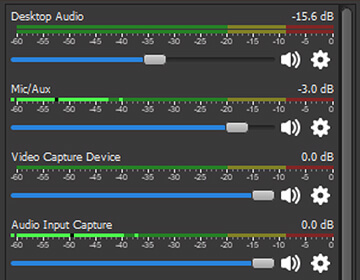
Otherwise, you could have a very loud feedback loop. Also, make sure you put on headphones, so your microphone doesn’t pick up the output.
HOW TO USE VST PLUGINS OBS STUDIO SOFTWARE
You can turn it on under “Advanced Audio Properties.” Set the “Audio Monitoring” of your microphone to be “Monitor and Output.” It may sound a bit weird as software monitoring is much slower than hardware monitoring (which you may use if you have an external DAC), so it’s probably not good to leave it on for normal use. However, you can listen to your audio while you adjust the settings, which will help you find the correct buttons to push in an unfamiliar plugin. There are thousands of VST plugins, so we can’t possibly cover them all. These particular settings will vary depending on which plugins you are using. Turning on Audio Monitoring for Debugging The ratio you can leave around two, but if you often yell at the games you play, you can turn it up to four or more, so you don’t break your viewers’ headphones. You’ll want to yell into your microphone a little bit for this part. The main options you’ll want to configure are the two checkboxes: the ratio (how much compression to add) and the threshold, which you’ll want to set right at the loudest you’ll expect your audio to be.

You’ll have to add this as a second plugin to use it alongside ReaFir. It is used to make your audio more uniform, boosting your quiet parts and toning down when you get loud. Audio compression is not the same as file compression and can make the audio sound worse.

But the ReaComp plugin gives much greater control over the compressor. The ReaFir plugin can do normal EQ and has a built-in compressor and noise gate. There are a number of different OBS audio plugins provided by ReaPlugs that are all worth trying out including compressors, IIR based equalizers and a configurable gate with side-chain filters. VST Plugins are a great way to enhance the audio quality of your stream, and are fully supported by OBS. You’ll want to turn the capturing off after a few seconds though, or it will start filtering your voice out. 10 Best OBS Studio Plugins ReaPlugs VST FX Suite. Select “Subtract” as the mode and stay quiet for a bit while you turn on “Automatically build noise profile.” You’ll see the red EQ profile change to match the room noise. The first useful feature is the subtractive EQ, which can capture a noise profile and adjust the EQ accordingly. You’ll want to click the “Open Plug-in Interface” button right below the drop-down to get there. Each VST plugin has its own interface that opens in a separate window. Adjusting Plugin SettingsĪfter OBS is set up, you’ll have to configure the actual plugin settings. Once you’ve got them added, that’s all the work you’ll need to do in OBS itself. You can add multiple plugins as well, which you’ll need to do if you want to use different plugins from ReaPlugs. We’ll configure “reafir_standalone” first as it’s pretty useful for EQ and noise suppression. Here you can select the plugin you’d like to add.

OBS has a few basic plugins of its own, mostly for noise control, but we’ll be using the “VST 2.x Plug-in” option.


 0 kommentar(er)
0 kommentar(er)
